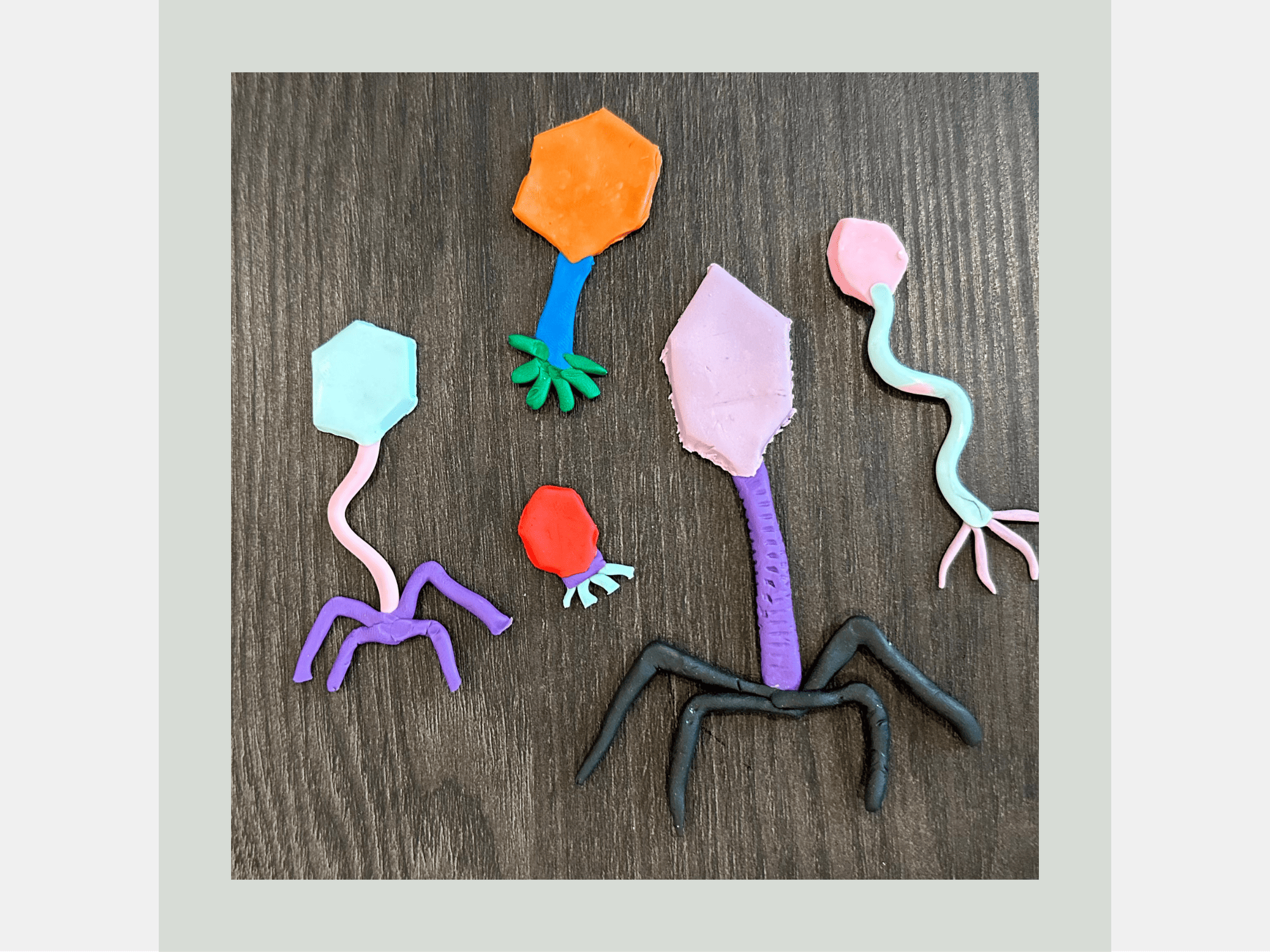The activity below was contributed by Michael Shamash during our podcast interview.
Welcome to the fascinating and intricate world of the human microbiome. In this activity, we are embarking on a creative exploration to craft model phages with clay, but before we dive into the hands-on part, let’s unravel the science behind these intriguing creatures and their vital role in our microbial ecosystem.
In the microbiome, which is essentially a bustling city of trillions of microorganisms residing within our bodies, bacteria often steal the spotlight. This is understandable, as extensive research has been dedicated to identifying and comprehending the critical role these bacteria play in maintaining our health. However, there’s another group of microorganisms that are gaining recognition: the viruses, collectively referred to as the virome.
Of particular interest are the bacteriophages, the heroes of our microbial tale. These viruses have a unique mission — they target bacteria rather than us. Nestled within our gut microbiome, they engage in a complex dance with the resident bacteria, potentially fostering a harmonious balance in our gut.
Now, why are we here crafting model phages out of clay? The answer lies in the remarkable diversity of phage structures. Just like a cityscape with its array of architectural wonders, phages come in various shapes and sizes. Some are like tiny lunar landers, while others resemble long worms. Creating these models allows us to appreciate the intricate and diverse forms that phages take, and it serves as a tangible reminder of the role they play in our microbiome.
So, grab your clay and let’s sculpt our way into the microscopic world of bacteriophages. Through this activity, we hope to foster a deeper understanding of these remarkable viruses and the intricate, delicate balance they help maintain in our bodies. Let’s celebrate the unsung heroes of the microbiome – the phages!
Materials
- Colored clay or playdough with at least three different colors.
- A clean workspace.
Instructions

Modeling clay bacteriophages created by Michael Shamash. The capsid (“head”), tail (“body”), and tail fibers are all in different colors to represent the distinct components of a phage particle. Also depicted are the diversity of phage sizes and morphologies.
- Choose Your Colors: Begin by selecting three different colors of clay or playdough. You’ll use these colors to represent different parts of our bacteriophage model. The first phage you’ll create is the classic, well-known T4 phage.
- Create the Capsid (Head): Take one color and mold it into a small ball. This will be the capsid or head of our T4 bacteriophage. The capsid typically houses the nucleic acid, which can be either DNA or RNA, and in this case for T4, it is DNA.
- Form the Tail: Using a different color, shape a long, thin structure attached to the capsid. This represents the tail of the phage, which extends down from the capsid.
- Add Tail Fibers: Now, take another color and create small extensions at the end of the tail. These are the tail fibers, which play a crucial role in recognizing specific receptors on bacterial cells — think of them as the “keys” to infection.
- Observe and Experiment: With your colorful phage model in hand, take a moment to appreciate its structure. You’ll notice how the capsid, tail, and tail fibers come together to form this microscopic predator.
- Research and Create More: Look up more phage species and their structure. Create another model (or two!). Feel free to experiment with different color combinations.
- Discuss and Explore: Engage in a conversation about the diversity of phage structures. Remember that real phages come in various shapes, sizes, and colors, just like your models. This activity is a fantastic way to grasp the concept of phage anatomy and appreciate the complexity of these tiny viruses.
By creating your own phage models, you’ve taken a step closer to understanding these remarkable microorganisms. This hands-on experience not only connects theory with practice but also sparks curiosity about the fascinating world of microbiology.
Enjoy your journey into the world of phages, and feel free to share your colorful creations with fellow enthusiasts or aspiring young scientists. Happy modeling!
The post Crafting Model Phages: Exploring the Virome in the Human Microbiome appeared first on Joyful Microbe.


